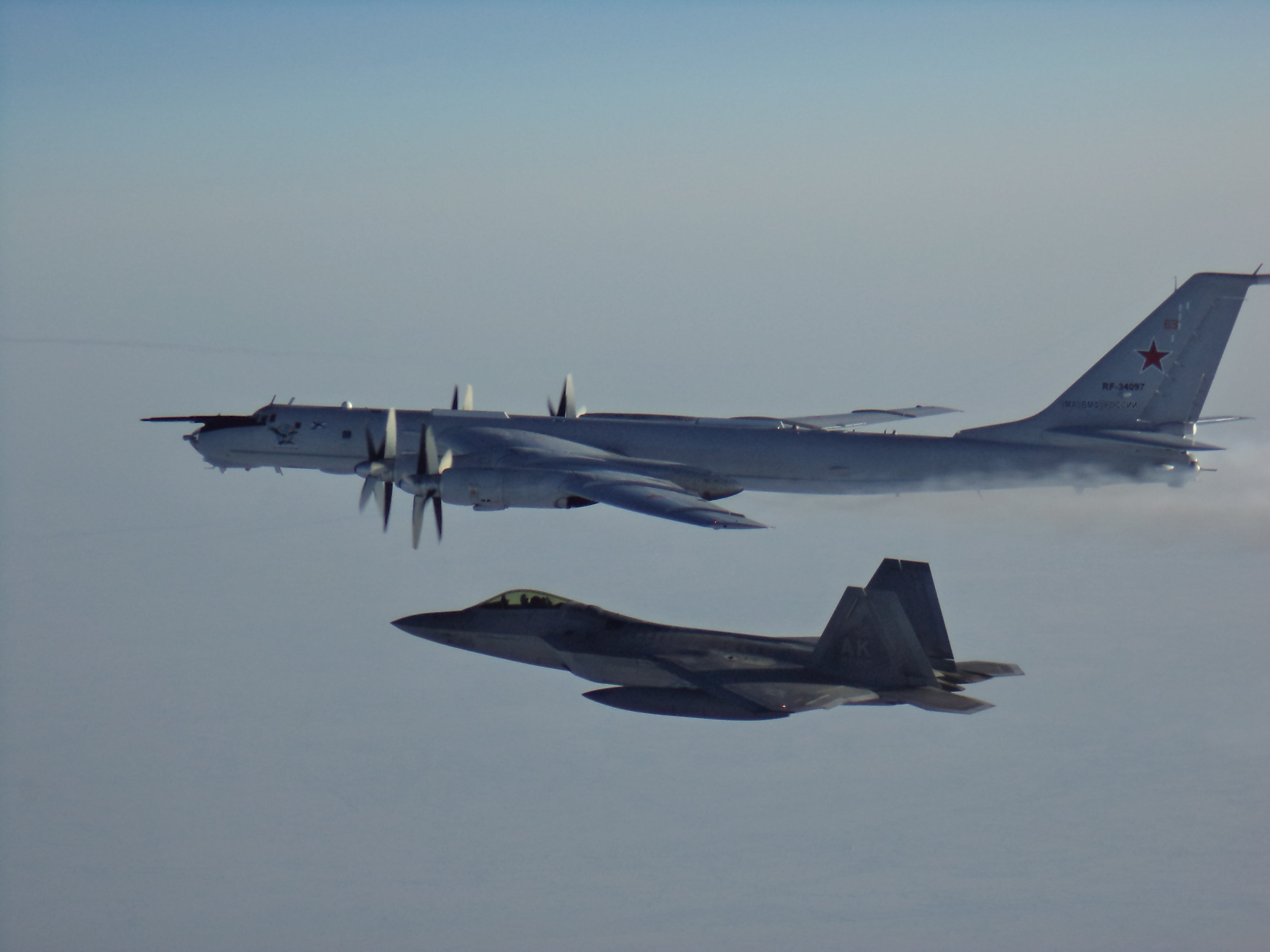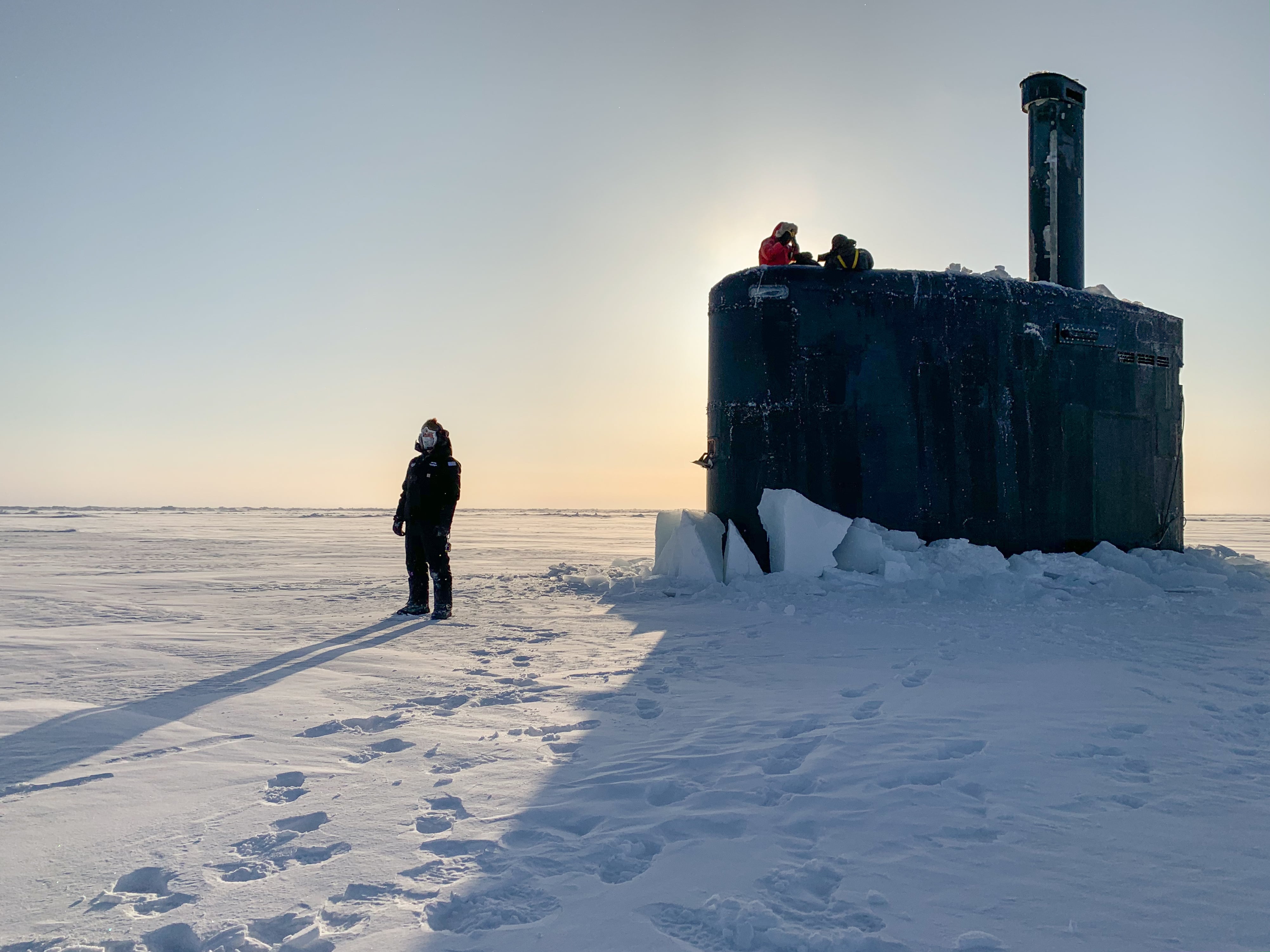The commander of U.S. Northern Command told lawmakers on Capitol Hill Wednesday that a pair of Russian reconnaissance aircraft intercepted by U.S. and Canadian jets March 9 were loitering around a U.S. submarine exercise known as ICEX.
Air Force Gen. Terrence J. O’Shaughnessy told lawmakers during a House Armed Services Committee hearing that the Russian aircraft were “operating in one of our ICEX exercises we had where submarines actually pop up out of the ice.”
O’Shaughnessy said the Russian aircraft loitered about 2,500 feet above a camp that was built for the submarine exercise. He said the Russian aircraft “loitered” with an F-22 and and F-18 on their wing.
North American Aerospace Defense Command said its aircraft intercepted two Russian Tu-142 maritime reconnaissance aircraft near Alaska on March 9.
NORAD said Tuesday that the Russian aircraft came within 50 nautical miles of Alaskan coast and remained within the Alaskan Air Defense Identification Zone over international airspace for roughly four hours.

The Russian aircraft were escorted the entire duration of the flight in the ADIZ by NORAD’s F-22s and CF-18s, which were supported by a KC-135 Stratotanker and E-3 Sentry aircraft, a news release detailed.
The Russian aircraft never entered U.S. or Canadian airspace and remained over the Beaufort Sea, NORAD said in a release.
ICEX is a three-week biennial exercise that allows the U.S. to assess the readiness of its submarines to operate in the Arctic.
Two submarines, the Seawolf-class fast-attack submarine Connecticut and the Los Angeles-class fast-attack submarine Toledo, are participating in this year’s ICEX.
ICEX officially kicked off March 4 following the creation of a temporary camp known as Seadragon. The camp is built on a multi-year ice flow in the Arctic and supports people participating in the exercise and serves as a temporary command post for the exercise.

ICEX 2020 is the 96th iteration of the training event.
“The Arctic is a potential strategic corridor between Indo-Pacific, Europe, and the U.S. homeland for expanded competition," Vice Adm. Daryl Caudle, commander of Submarine Forces, said in a news release.
"The Submarine Force must maintain readiness by exercising in Arctic conditions to ensure they can protect national security interests and maintain favorable balances of power in the Indo-Pacific and Europe if called upon,” Caudle said in the release.
RELATED

O’Shaughnessy told lawmakers that the intercept of the Russian aircraft highlighted a need to maintain the “ability to react appropriately” by having “persistent defense” and domain awareness to potentially defeat the threat.
That means knowing what’s coming in or near U.S. and allied sovereign airspace and having the ability to react to that threat — not just deploying forces to the region when they need to get up there, O’Shaughnessy said.
Shawn Snow is the senior reporter for Marine Corps Times and a Marine Corps veteran.



